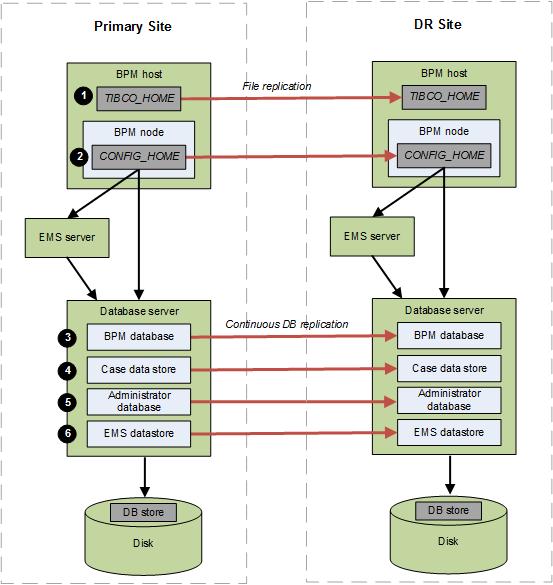Data-Level Replication
The data-level replication approach requires only file-based and database-based replication software. It ensures that data on the Disaster Recovery (DR) site will be in a consistent state across the various TIBCO ActiveMatrix BPM datastores and will therefore start-up when required.
Warning: If the primary site fails, there may be some data loss or lost state changes within executing business processes. The extent of this loss is determined by the latency of the replication of changes on the primary site to the DR site.
TIBCO ActiveMatrix BPM maintains key system configuration and transaction data both on the file system and within relational databases. This data must be reliably replicated to the DR site.
The following figure provides an example of how this can be done, showing the data that needs to be replicated between the primary and DR site and the replication methods employed.
There are two types of data:
- non-operational - data that changes only as a result of management actions being performed upon the system (items 1 and 2 in the diagram).
- operational - data that changes continuously during the operation of the system (items 3 to 6 in the diagram). This data must be consistent between the primary and DR sites. Synchronous replication of operational data is not a requirement, but asynchronous replication may cause loss of data.
Note: The case data store (item 4) can be held as part of the main TIBCO ActiveMatrix BPM database (item 3). See ActiveMatrix BPM: BDS Database Configuration.
Copyright © Cloud Software Group, Inc. All rights reserved.

